Influence of Heat Treatment in the Microstructure of a Joint of Nodular Graphite Cast Iron when Using the Tungsten Inert Gas Welding Process with Perlitic Grey Cast Iron Rods as Filler Material
Abstract
1. Introduction
2. Materials and Methods
2.1. Materials
2.2. Welding Processes
- -
- Group 1: Without preheating or postweld heat treatment.
- -
- Group 2: The coupon was annealed at 900 °C for 1 h and slowly cooled down inside the furnace.
- -
- Group 3: The plates where preheated up to 450 °C before welding. The temperature was maintained around this value between passes.
2.3. Tests
- -
- Five test pieces of 20 mm width and 100 mm length for tensile tests
- -
- One sample for metallographic examination of the weld and microhardness measurement
- -
- One sample for pin-on-disc tests.
3. Results
4. Analysis of Results
5. Conclusions
Author Contributions
Funding
Acknowledgments
Conflicts of Interest
References
- Lacaze, J.; Sertucha, J.; Larrañaga, P.; Suárez, R. Statistical study to determine the effect of carbon, silicon, nickel and other alloying elements on the mechanical properties of as-cast ferritic ductile irons. Rev. Metal. 2016, 52. [Google Scholar] [CrossRef]
- Suárez Sanabria, A.; Fernández Carrasquilla, J. Microestructura y propiedades mecánicas de una fundición esferoidal ferrítica en bruto de colada para su uso en piezas de grandes dimensiones. Rev. Metal. 2006, 42, 18–31. [Google Scholar]
- Pouranvari, M. On the weldability of grey cast iron using nickel based filler metal. Mater. Des. 2010, 31, 3253–3258. [Google Scholar] [CrossRef]
- Gouveia, R.M.; Silva, F.J.; Paiva, O.C.; de Fátima Andrade, M.; Pereira, L.A.; Moselli, P.C.; Papis, K.J. Comparing the Structure and Mechanical Properties of Welds on Ductile Cast Iron (700 MPa) under Different Heat Treatment Conditions. Metals 2018, 8, 72. [Google Scholar] [CrossRef]
- Pascual-Guillamón, M.; Cárcel-Carrasco, J.; Pérez-Puig, M.Á.; Salas-Vicente, F. Influence of an ERNiCrMo-3 root pass on the properties of cast iron weld joints. Rev. Metal. 2018, 54, e122. [Google Scholar] [CrossRef]
- Milosan, I. The Manufacturing of a Special Wear-resistant Cast Iron Used in Automotive Industry. Procedia Soc. Behav. Sci. 2014, 109, 610–613. [Google Scholar] [CrossRef]
- Oksanen, V.; Valtonen, K.; Andersson, P.; Vaajoki, A.; Laukkanen, A.; Holmberg, K.; Kuokkala, V.T. Comparison of laboratory rolling–sliding wear tests with in-service wear of nodular cast iron rollers against wire ropes. Wear 2015, 340–341, 73–81. [Google Scholar] [CrossRef]
- Medyńskia, D.; Janus, A. Effect of heat treatment parameters on abrasive wear and corrosion resistance of austenitic nodular cast iron Ni–Mn–Cu. Arch. Civ. Mech. Eng. 2018, 18, 515–521. [Google Scholar] [CrossRef]
- Cárcel-Carrasco, F.J.; Pérez-Puig, M.A.; Pascual-Guillamón, M.; Pascual-Martínez, R. An Analysis of the Weldability of Ductile Cast Iron Using Inconel 625 for the Root Weld and Electrodes Coated in 97.6% Nickel for the Filler Welds. Metals 2016, 6, 283. [Google Scholar] [CrossRef]
- Abboud, J.H. Microstructure and erosion characteristic of nodular cast iron surface modified by tungsten inert gas. Mater. Des. 2012, 35, 677–684. [Google Scholar] [CrossRef]
- Sellamuthu, P.; Samuel, D.G.; Dinakaran, D.; Premkumar, V.P.; Li, Z.; Seetharaman, S. Austempered Ductile Iron (ADI): Influence of Austempering Temperature on Microstructure, Mechanical and Wear Properties and Energy Consumption. Metals 2018, 8, 53. [Google Scholar] [CrossRef]
- Islam, M.A.; Haseeb, A.S.M.A.; Kurny, A.S.W. Study of wear of as-cast and heat-treated spheroidal graphite cast iron under dry sliding conditions. Wear 1995, 188, 61–65. [Google Scholar] [CrossRef]
- El-Banna, E.M. Effect of preheat on welding of ductile cast iron. Mater. Lett. 1999, 41, 20–26. [Google Scholar] [CrossRef]
- Askari-Paykani, M.; Shayan, M.; Shamanian, M. Weldability of ferritic ductile cast iron using full factorial design of experiment. Int. J. Iron Steel Res. 2014, 21, 252–263. [Google Scholar] [CrossRef]
- Hütter, G.; Zybell, L.; Kuna, M. Micromechanical modeling of crack propagation in nodular cast iron with competing ductile and cleavage failure. Eng. Fract. Mech. 2015, 147, 388–397. [Google Scholar] [CrossRef]
- Zhang, Y.Y.; Pang, J.C.; Shen, R.L.; Qiu, Y.; Li, S.X.; Zhang, Z.F. Investigation on tensile deformation behavior of compacted graphite iron based on cohesive damage model. Mater. Sci. Eng. 2018, 713, 260–268. [Google Scholar] [CrossRef]
- Pascual, M.; Cembrero, J.; Salas, F.; Martínez, M.P. Analysis of the weldability of ductile iron. Mater. Lett. 2008, 62, 1359–1362. [Google Scholar] [CrossRef]
- El-Banna, E.M.; Nageda, M.S.; El-Saadat, M.A. Study of restoration by welding of pearlitic ductile cast iron. Mater. Lett. 2000, 42, 311–320. [Google Scholar] [CrossRef]
- Cui, J.; Chen, L. Microstructure and abrasive wear resistance of an alloyed ductile iron subjected to deep cryogenic and austempering treatments. J. Mater. Sci. Technol. 2017, 33, 1549–1554. [Google Scholar] [CrossRef]
- Cárcel-Carrasco, J.; Pascual, M.; Pérez-Puig, M.; Segovia, F. Comparative study of TIG and SMAW root welding passes on ductile iron cast weldability. Metalurgija 2017, 56, 91–93. [Google Scholar]
- Cárcel-Carrasco, F.J.; Pascual-Guillamón, M.; Pérez-Puig, M.A. Effects of X-rays radiation on AISI 304 stainless steel weldings with AISI 316L filler material: A study of resistance and pitting corrosion behavior. Metals 2016, 6, 102. [Google Scholar] [CrossRef]
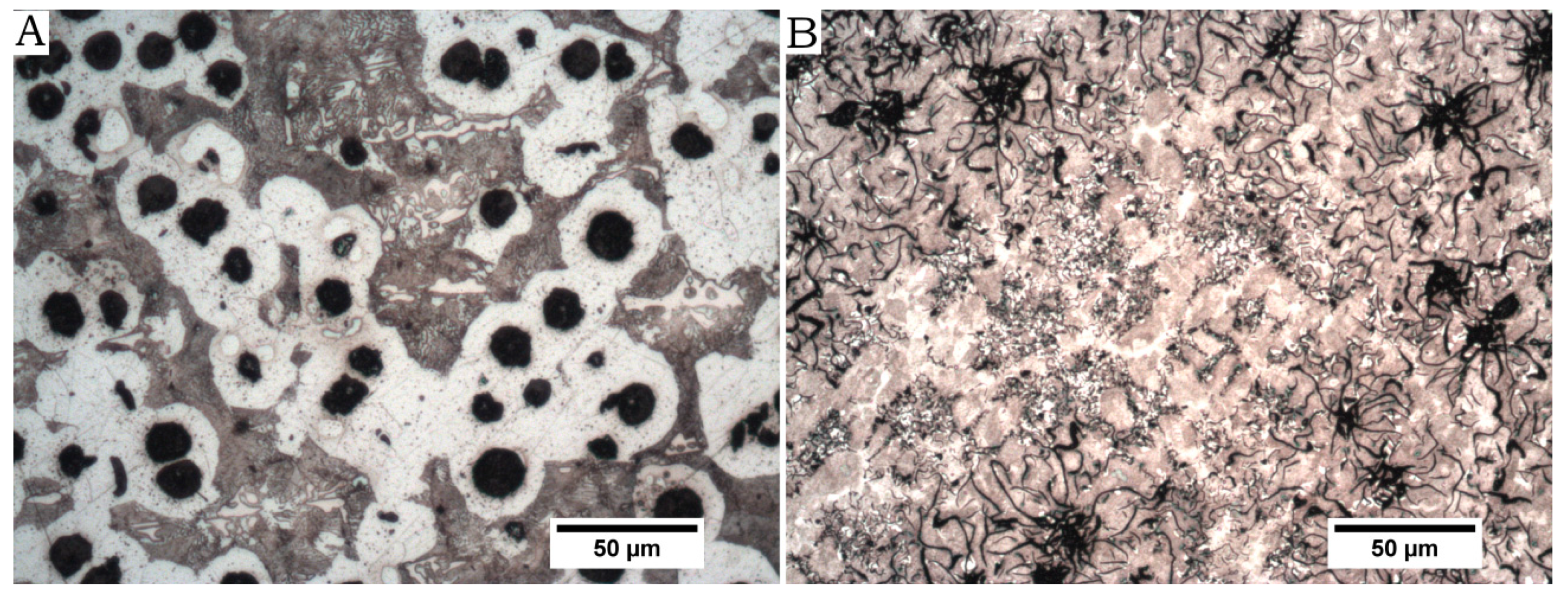
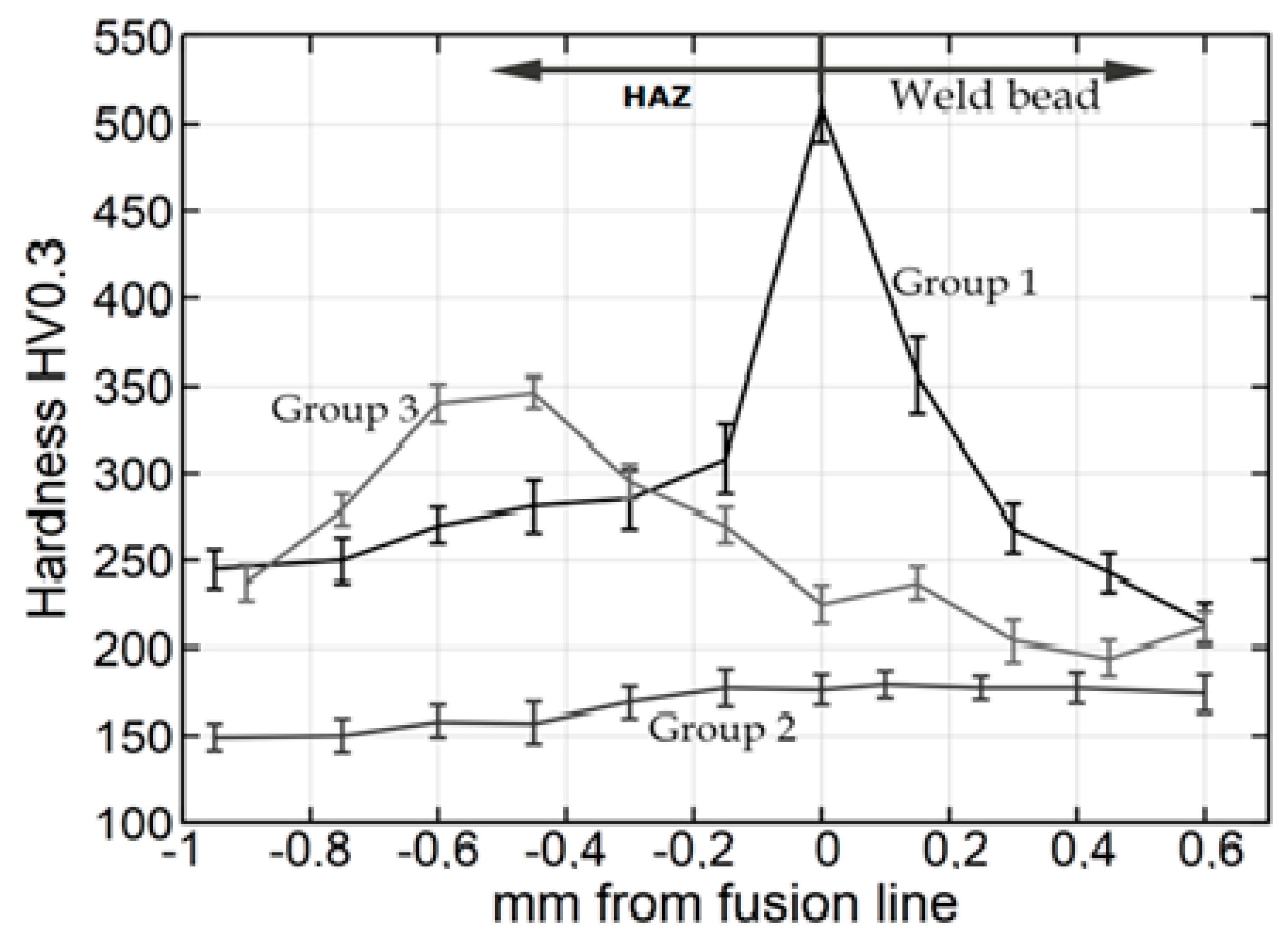



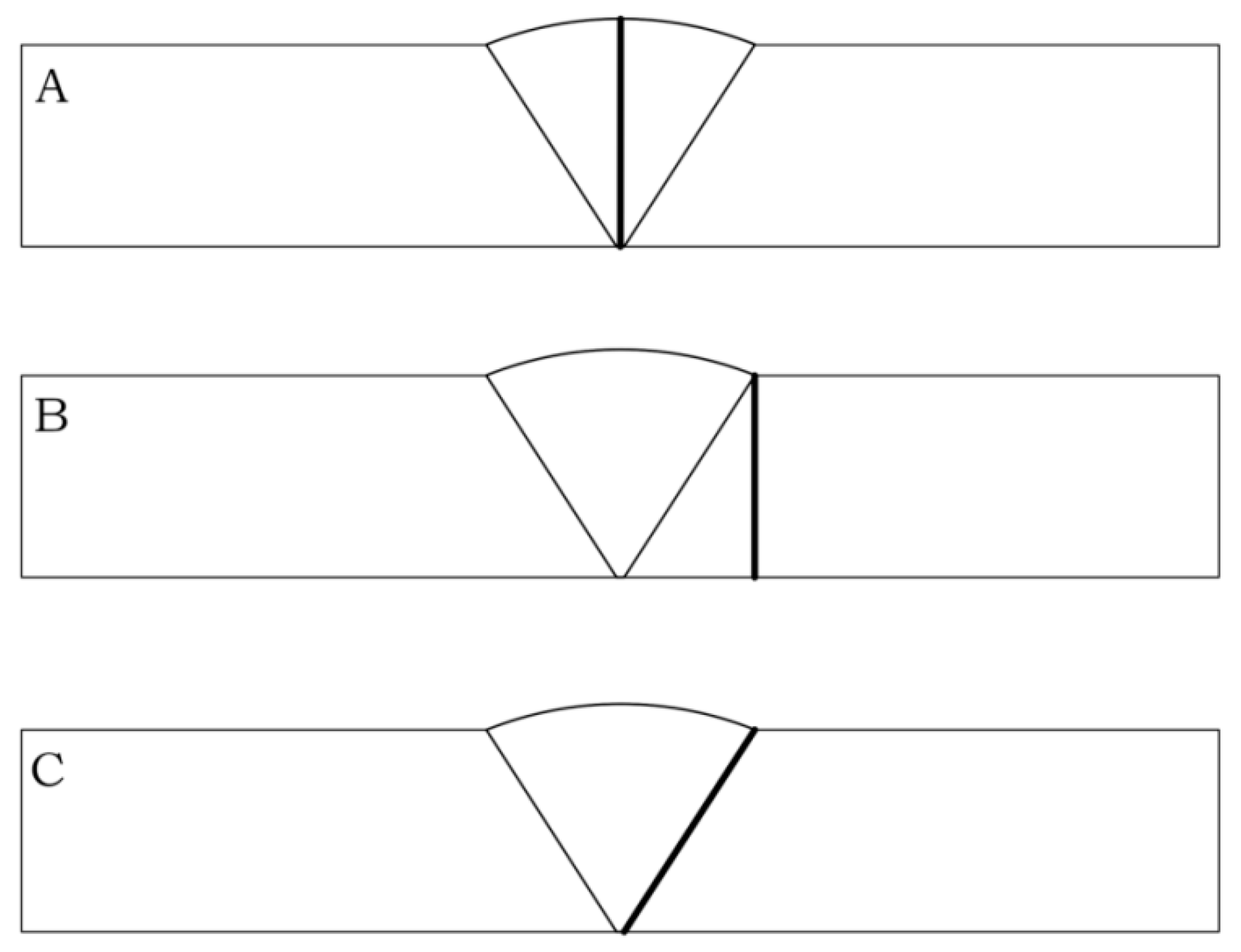
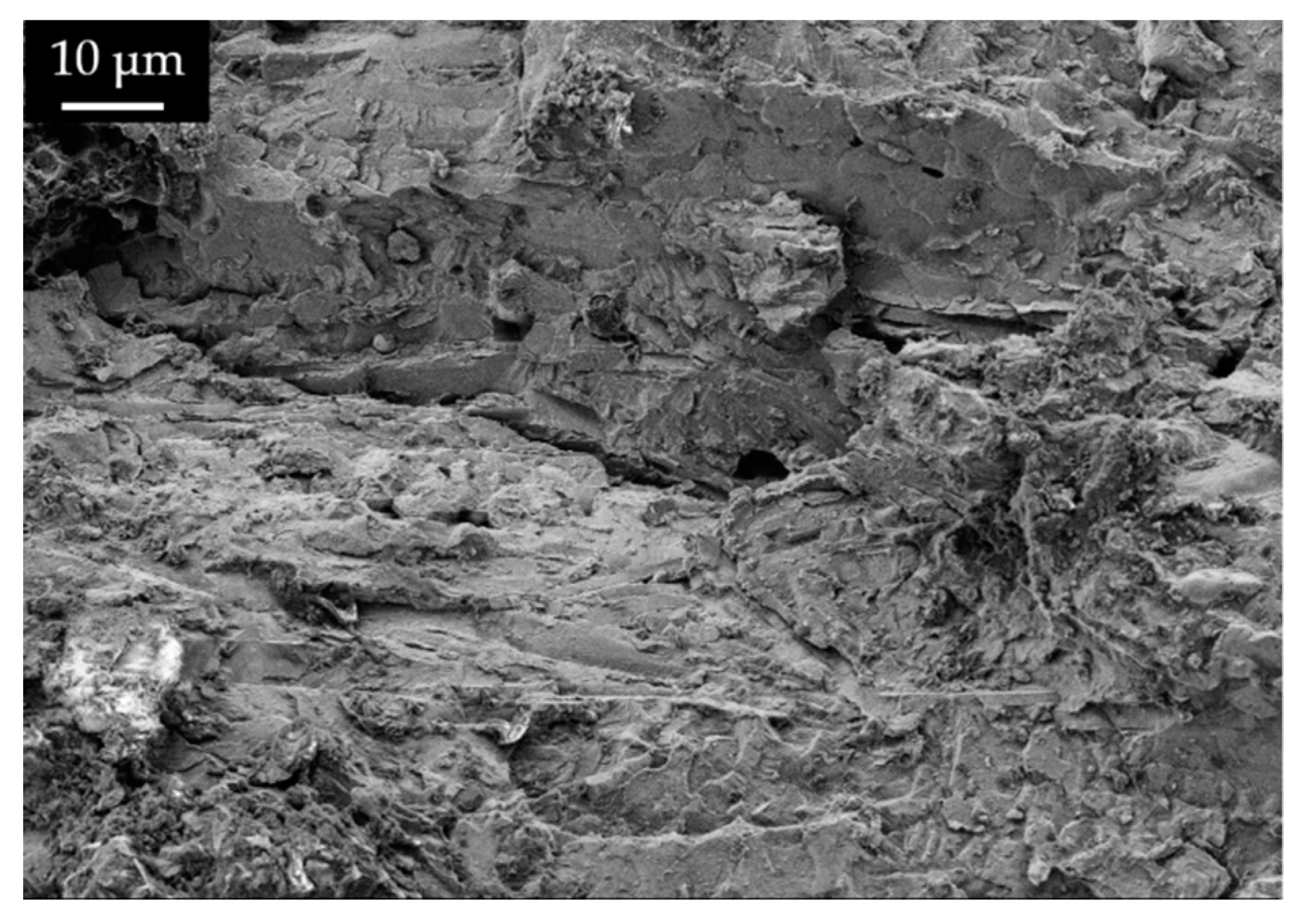

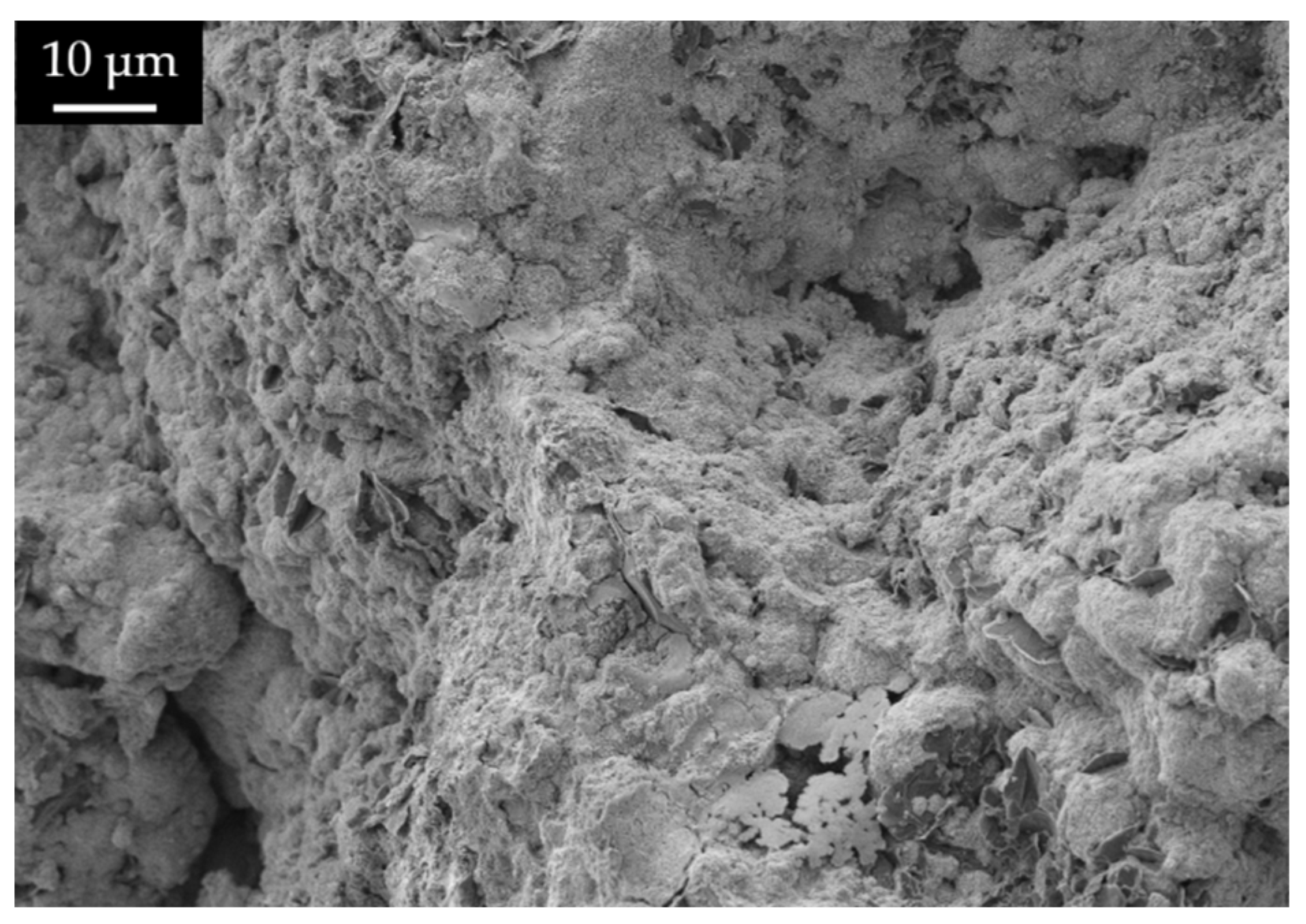


| Nodular Cast Iron (Base Material) | |||||||||
| C | Mn | S | Ni | Cu | Si | P | Cr | Mo | Mg |
| 3.61 | 0.045 | 0.007 | 0.02 | 0.026 | 2.8 | 0.02 | 0.03 | <0.01 | <0.032 |
| Perlitic Grey Cast Iron (Filler Material) | |||||||||
| C | Mn | S | Ni | Cu | Si | P | Cr | Mo | Mg |
| 2.5 | 0.4 | 0.01 | - | - | 1.1 | 0.09 | - | - | - |
| Mechanical Properties | Perlitic Grey Cast Iron | Nodular Cast Iron | |
|---|---|---|---|
| Ultimate strength | MPa | 325 | 420 |
| Yield strength | MPa | 305 | 340 |
| Elongation | % | 9 | 14 |
| Young modulus | MPa | 130,000 | 160,000 |
| Hardness | HV | 248 | 196 |
| Group | Ultimate Strength (MPa) | Yield Strength (MPa) | A% |
|---|---|---|---|
| Without heat treatment | 370 ± 18 | 330 ± 18 | 9 |
| 900 °C postweld annealing | 320 ± 11 | 295 ± 11 | 12 |
| 450 °C preheating | 335 ± 10 | 310 ± 10 | 10.5 |
© 2019 by the authors. Licensee MDPI, Basel, Switzerland. This article is an open access article distributed under the terms and conditions of the Creative Commons Attribution (CC BY) license (http://creativecommons.org/licenses/by/4.0/).
Share and Cite
Cárcel-Carrasco, F.-J.; Pascual-Guillamón, M.; Salas-Vicente, F.; Donderis-Quiles, V. Influence of Heat Treatment in the Microstructure of a Joint of Nodular Graphite Cast Iron when Using the Tungsten Inert Gas Welding Process with Perlitic Grey Cast Iron Rods as Filler Material. Metals 2019, 9, 48. https://doi.org/10.3390/met9010048
Cárcel-Carrasco F-J, Pascual-Guillamón M, Salas-Vicente F, Donderis-Quiles V. Influence of Heat Treatment in the Microstructure of a Joint of Nodular Graphite Cast Iron when Using the Tungsten Inert Gas Welding Process with Perlitic Grey Cast Iron Rods as Filler Material. Metals. 2019; 9(1):48. https://doi.org/10.3390/met9010048
Chicago/Turabian StyleCárcel-Carrasco, Francisco-Javier, Manuel Pascual-Guillamón, Fidel Salas-Vicente, and Vicente Donderis-Quiles. 2019. "Influence of Heat Treatment in the Microstructure of a Joint of Nodular Graphite Cast Iron when Using the Tungsten Inert Gas Welding Process with Perlitic Grey Cast Iron Rods as Filler Material" Metals 9, no. 1: 48. https://doi.org/10.3390/met9010048
APA StyleCárcel-Carrasco, F.-J., Pascual-Guillamón, M., Salas-Vicente, F., & Donderis-Quiles, V. (2019). Influence of Heat Treatment in the Microstructure of a Joint of Nodular Graphite Cast Iron when Using the Tungsten Inert Gas Welding Process with Perlitic Grey Cast Iron Rods as Filler Material. Metals, 9(1), 48. https://doi.org/10.3390/met9010048






